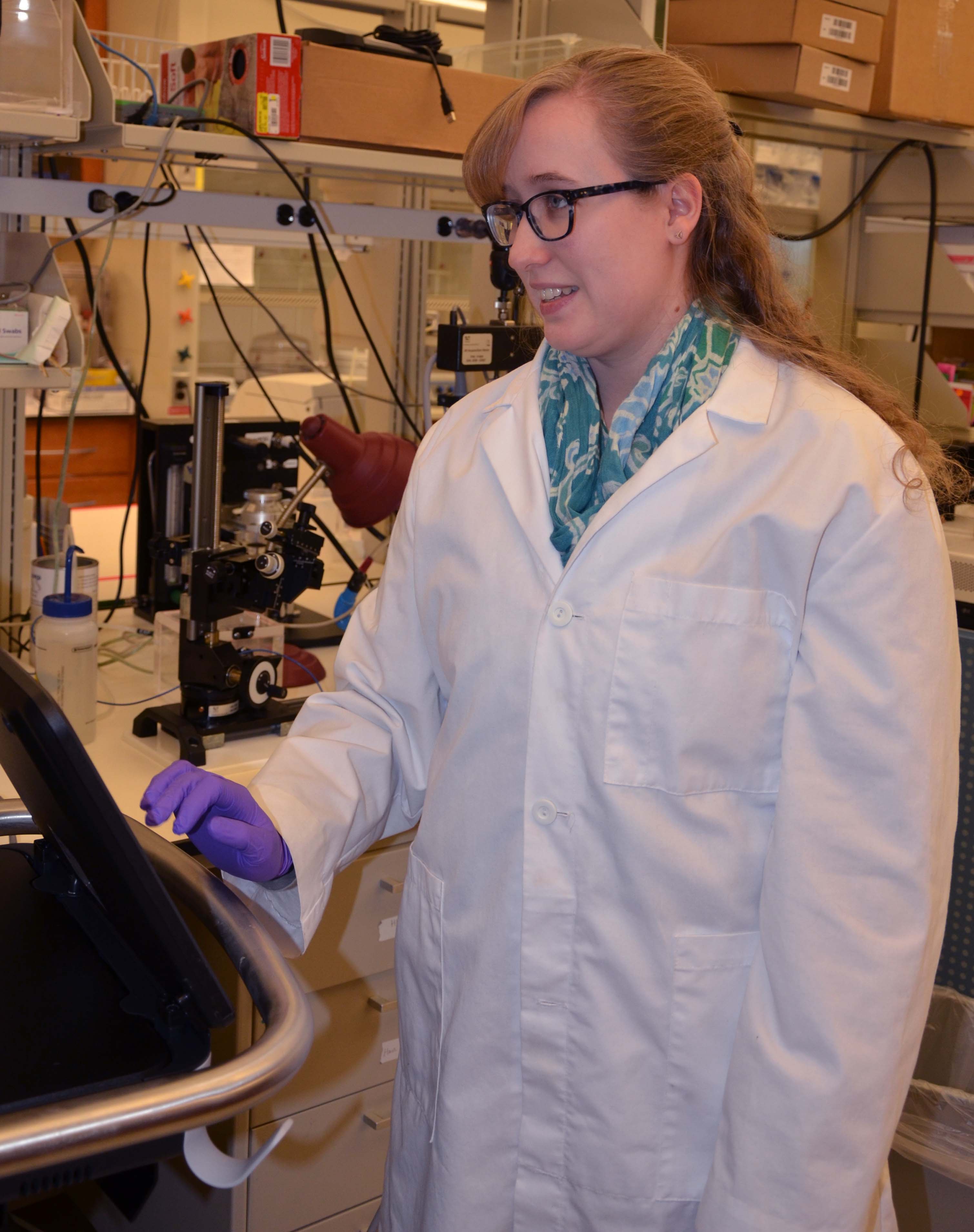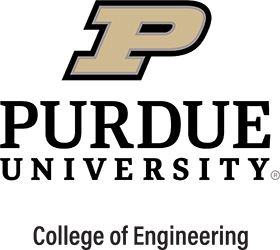We can do better for our patients, and I can do more with my talents. That sounds like it could be a mantra for Jennifer Anderson, who first gravitated toward a medical career based in a clinical setting after she graduated from college. Jennifer's passion for physics and math at Rochester Institute of Technology led her into four years of diagnostic work, using sonography to detect the presence and size of abdominal aortic aneurysms. It's important work because the growth and rupture of these aneurysms in the aorta - the largest artery in the body - can cause life-threatening bleeding.
But she felt called to do even more, and she found the keys to answering that call thanks to research opportunities at the Weldon School of Biomedical Engineering where she is pursuing a PhD under the anticipated co-mentorship of Craig Goergen, assistant professor of biomedical engineering, and Neil Mascarenhas, a physician in Interventional Radiology at Indiana University School of Medicine.

That collaboration symbolizes "more" in a few ways, Jennifer says. The additional studies require a greater investment of her time - and of her talents in math and the sciences, which she had concluded were not always tapped by her everyday sonographic duties. Better still, her new research takes to a new level the battle she enthusiastically waged against the threat of aortic aneurysms.
In clinical practice, she had found standard monitoring of aneurysm growth, where reaching a particular size triggers surgery to prevent a rupture, did not always tell the whole story. Some patients suffered a crisis even though their aneurysm had not grown to the tripwire size, and other patients suffered no rupture even though they arrived at the clinic with an aneurysm larger than the danger level.
"It's not super-reliable," Jennifer says of the sonographic measurement which is still today's best diagnostic option. "We need a better metric." So, she's grateful for the partnership between Purdue's Weldon School of Biomedical Engineering and IU School of Medicine and for the laboratory time to pursue that improvement. She is developing a new approach using biomechanical insights to monitor the level of strain the aneurysm is undergoing. Earlier and better signals of heightened risk should allow more strategic use of a treatment to slow the ballooning growth, thereby shifting a clinic's capabilities toward prevention of a rupture, not merely diagnoses and responses tied to size measurements. This research goal, developing new technology that can empower clinicians, inspired Jennifer and helped her win an Innovation for Clinical Translation (ICT) Fellowship to support her research.
The coordinated PhD studies, aimed to bridge the lab-clinic gap, reflect an overall goal of the two universities and facilitate a career of "more" in a way well suited to Jennifer. They give her the problem-solving insights she needs from biomechanics and other fields in the world of engineering. That's a world with which she wasn't very familiar.
"What really stood out to me in terms of Purdue being a top choice for biomedical engineering was the Interdisciplinary Biomedical Sciences (IBSc) program," she says. "Having faculty who are supportive saying, well, you don't have the engineering background, but you can learn, we have confidence in you, was a big thing for me." The IBSc platform for filling in the learning gaps, so they don't hold back a student's dreams, was another asset the Weldon School offered. "It was encouraging and really appealing," Jennifer recalls.
There's one other aspect of this student's do-better/do-more motivation that has grown since her days of patient care through sonography. She still enjoys that clinical work and occasionally takes a shift at a local hospital. But her long-term plans now "lean toward academia." She has enjoyed instructing students using ultrasound machines and helping to oversee lab classes. "Teaching is the hope, but I don't want to rule out research just yet."
Jennifer's redesigned medical career is poised to expand and influence patients' lives across the same breadth and depth as the spectrum of possibilities she discovered in the Engineering-Medicine Partnership.


